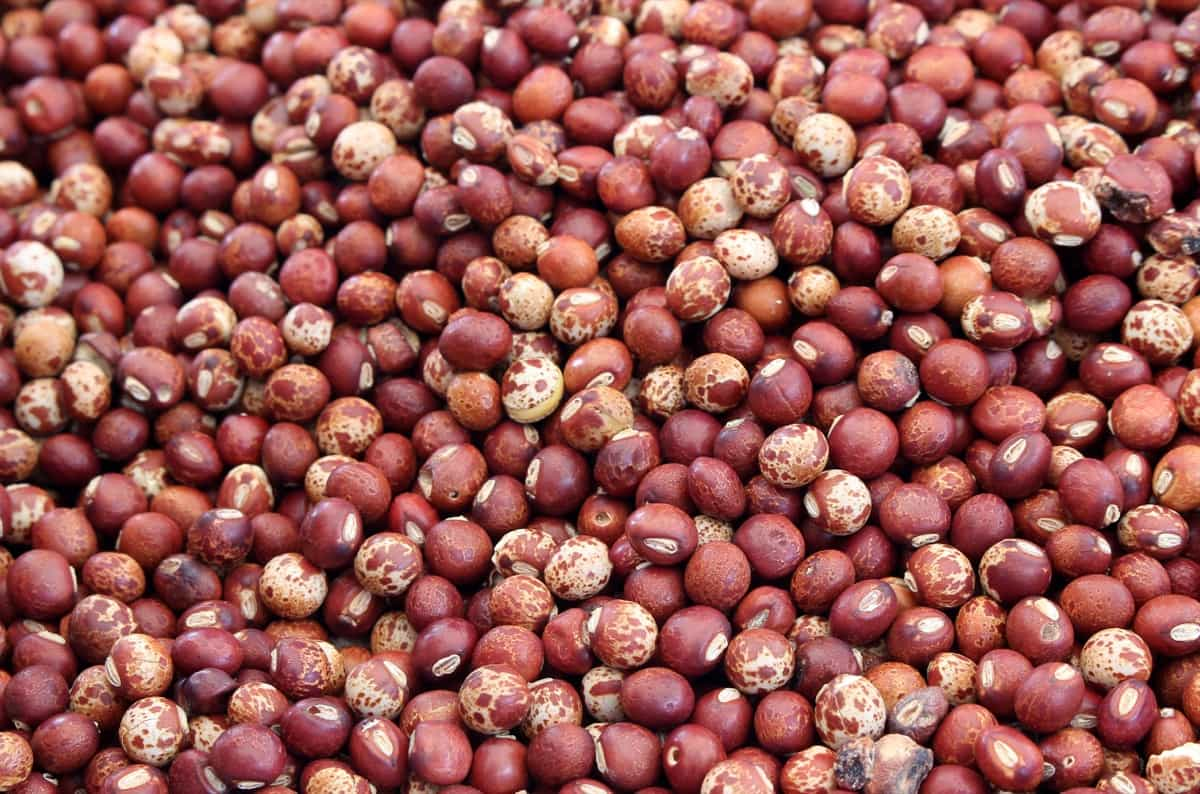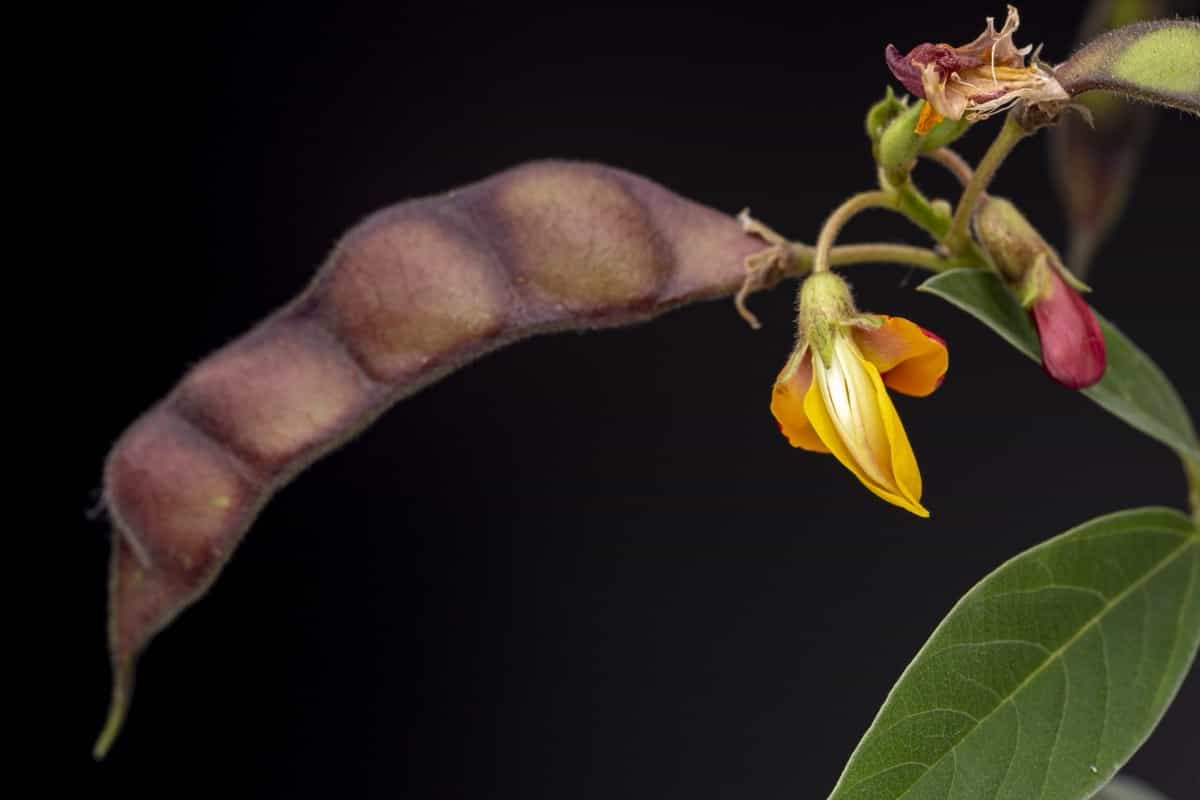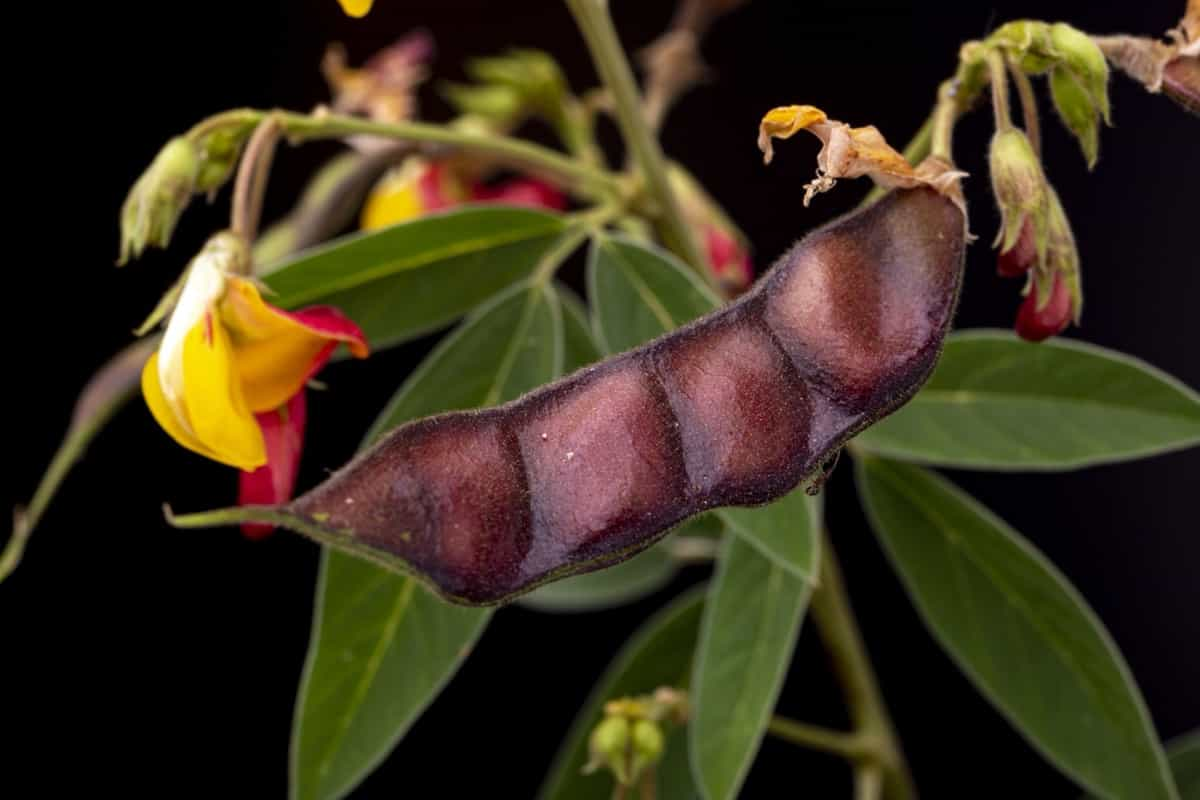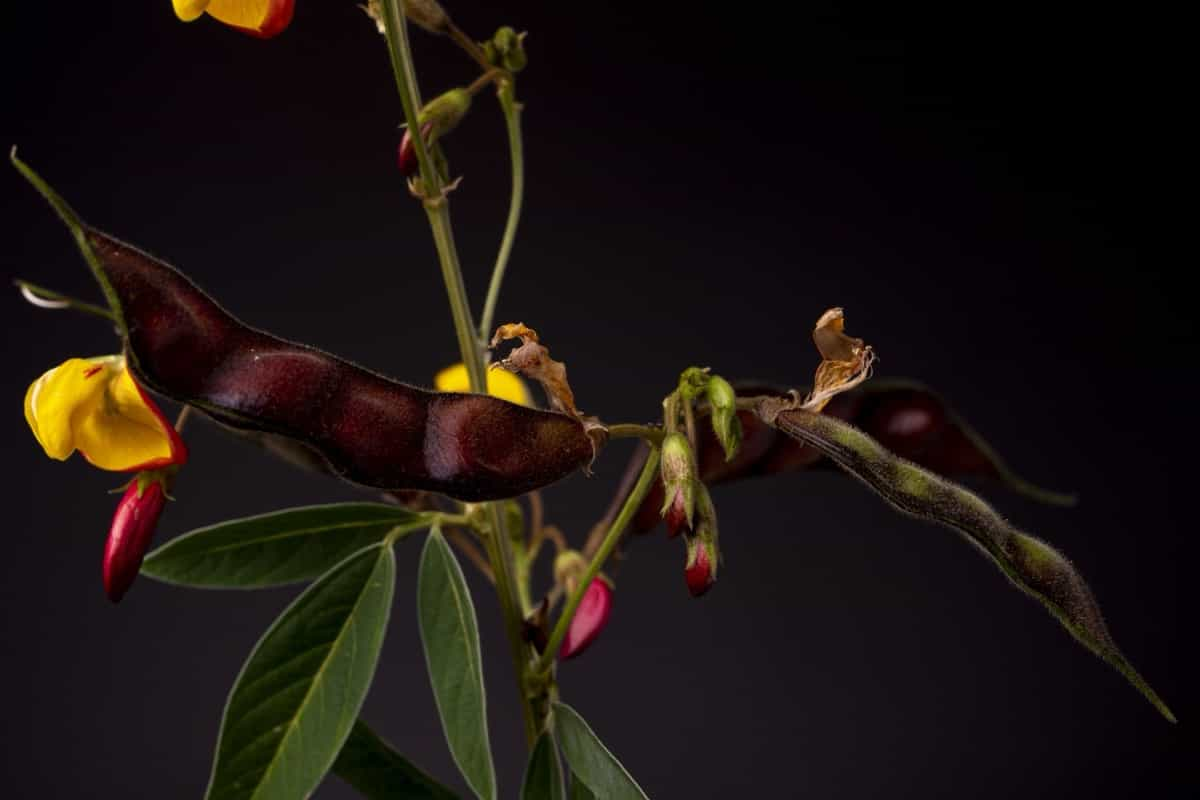Red Gram is a popular legume crop that belongs to the family Fabaceae. It is also commonly referred to as Pigeon Pea or Tur. However, like any other crop, Red Gram is susceptible to many pests that can affect its growth and yield. These pests feed on leaves, flowers, and pods, leading to reduced crop yield. Implementing appropriate control measures helps minimize these losses and maximize crop output.

Pest Management in Red Gram
Common Pests That Affect Red Gram at The Flowering Stage
- Pod borer: This notorious pest attacks the developing Red Gram pods during the flowering stage. The larvae feed on the developing seeds, leading to significant yield losses.
- Aphids: These insects suck sap from the plant leaves. Their feeding activity weakens the plant’s immune system and makes it more susceptible to other diseases.
- Whiteflies: Similar to aphids, whiteflies also feed on plant sap and excrete sticky honeydew, which attracts ants and promotes fungal growth.
- Leafhoppers: These small insects pierce through leaf tissues to extract sap from Red Gram plants. Their feeding causes the yellowing of leaves and stunted growth.
- Thrips: Thrips damage young flowers by sucking their contents, resulting in distorted blooms with brown spots or streaks.
Integrated Pest Management Strategies for Red Gram
IPM strategies can help minimize the damage caused by pests and reduce reliance on chemical pesticides. Regularly inspecting your Red Gram plants for signs of pest infestation can help you catch problems early on and take appropriate action. Look out for chewed leaves, wilting plants, or any unusual discoloration. Another important component of IPM is cultural practices. These involve making changes to the environment in order to discourage pest activity.
In case you missed it: Rose Gram Caterpillar Pest Management: Symptoms, Treatment, Chemical, Biological, and Organic Control

For example, practicing proper plant spacing can improve air circulation and make it harder for pests to spread from one plant to another. Crop rotation is another effective cultural practice that disrupts the life cycles of many pests. By planting different crops in sequence, you interrupt their breeding patterns and reduce their numbers over time. In addition, employing physical barriers like nets or screens can be highly effective at keeping insects away from your precious crop without resorting to chemicals.
Biological Control Measures
Biological control measures offer a natural and sustainable approach to managing pests in Red Gram at the flowering stage. These methods rely on the use of beneficial organisms that prey on or parasitize pests, helping to keep their populations in check. The effective biological control method is the introduction of predatory insects.
Furthermore, farmers can also encourage biodiversity by planting companion crops that attract natural enemies of pest species. For example, marigolds are known to repel certain harmful nematodes. Additionally, practicing crop rotation can disrupt pest life cycles and reduce reliance on chemical pesticides.
Cultural Practices for Pest Control
- Crop rotation: Rotating Red Gram with other crops helps break the pest life cycle by disrupting their host plants. This reduces the build-up of pest populations.
- Timely sowing: Sowing Red Gram at the right time ensures that it grows vigorously during its critical stages, making it less susceptible to pest attacks.
- Weed management: Proper weed control helps eliminate alternate hosts for pests and reduces competition for nutrients and water, thus promoting the healthy growth of Red Gram plants.
- Sanitation: Removing crop residues after harvest prevents the accumulation of pest eggs or larvae, reducing their chances of survival till the next season.
- Field hygiene: Keeping fields clean from weeds, debris, and volunteer plants minimizes hiding places and breeding sites for pests.
- Balanced nutrition: Providing adequate nutrition to Red Gram plants through proper fertilization enhances their resistance against pests and diseases.
- Water management: Maintaining appropriate irrigation practices ensures optimal plant health while minimizing excess moisture that may favor pest development.
Chemical Control Options
One common chemical control option is the application of insecticides. These are designed to kill or repel insects that feed on Red Gram plants. By targeting specific pests like aphids, thrips, or pod borers, insecticides can help prevent damage and reduce yield loss. Another chemical control option is the use of fungicides.
In case you missed it: Termites and Thrips Management in Green Gram: Symptoms, Treatment, Chemical, Biological, Natural, and Organic Control

Fungal diseases such as powdery mildew or wilt can affect Red Gram plants during their flowering stage. Fungicides are formulated to combat these diseases by inhibiting fungal growth and preventing further infection. Additionally, it’s advisable to rotate different types of pesticides with varying modes of action to prevent pest resistance from developing over time.
Monitoring and Early Detection
By regularly monitoring the crop, farmers can identify signs of pest infestation in Red Gram before it becomes severe. This allows for timely intervention and prevents significant damage to the yield. Farmers should inspect their plants closely, looking for any visible symptoms such as wilting leaves, discoloration, or insect presence.
Additionally, they can use sticky traps or pheromone traps to capture flying insects and monitor their population levels. To promote early detection, farmers should educate themselves about common pests that affect Red Gram during flowering. They should familiarize themselves with the appearance and behavior of these pests so that they can quickly spot them during their routine inspections.
Impact of Pests on Flowering Stage
The impact of pests on the flowering stage of Red Gram can be detrimental to the overall yield and quality of the crop. Pests such as pod borers, leafhoppers, and aphids can cause damage to the plants during this crucial stage. When these pests attack Red Gram at its flowering stage, they disrupt pollination processes, resulting in a poor fruit set. The flowers may drop prematurely due to infestation or fail to produce healthy seeds. To control these impacts, integrated pest management strategies should be implemented.
Resistant Varieties
Resistant Red Gram varieties are those that have been selected for their ability to withstand and tolerate specific pests or diseases. The development of resistant varieties involves careful selection and breeding processes that aim to enhance natural resistance mechanisms within the plant. This can include traits like thicker cuticles on leaves, increased production of defensive compounds, or improved tolerance to insect feeding.
By incorporating these resistant traits into new Red Gram cultivars through traditional breeding methods or biotechnological approaches, scientists are continuously working towards developing more resilient crops that require fewer pesticide applications. Some examples of resistant Red Gram varieties include KRG-2, Vamban 1, LRG 41 (TNAU), CO7-6 (ICRISAT), etc. These varieties exhibit strong resistance against major pests such as pod borer and stem fly.
Environmental Factors and Pest Management
Temperature – Insects are highly influenced by temperature fluctuations, with some pests thriving in warm conditions while others prefer cooler temperatures. By monitoring temperature patterns and adjusting cultivation practices accordingly, farmers can create an environment that discourages pest activity.
Humidity – Excessive moisture levels can lead to attract pests such as aphids and mites. Proper irrigation techniques that maintain optimum soil moisture levels can help prevent these issues and minimize the risk of pest damage.
Water sources – Standing water or poorly drained fields provide breeding grounds for insects, increasing the likelihood of disease transmission among crops. Implementing proper drainage systems can significantly reduce these risks.
In case you missed it: Leaf Webber Management in Green Gram: Symptoms, Identification, Treatment, Chemical, Biological, Natural, and Organic Control

Frequently Asked Questions (FAQ) on Pest Management in Red Gram
How Can I Identify If My Red Gram Plants Are Infested with Pests?
Look out for symptoms like wilting leaves, yellowing or curling of leaves, the presence of holes on leaves or pods, stunted growth, and sticky secretions on plant parts.
How Important Is Timely Monitoring for Effective Pest Management in Red Gram?
Timely monitoring is key to successful pest management in Red Gram at the flowering stage. Regular scouting helps identify early signs of infestation so that appropriate measures can be taken.
Are There Any Organic Insecticides Available for Controlling Pests in Red Gram?
Yes. Organic insecticides like neem oil or botanical extracts derived from garlic or chilli pepper can be effective against certain pests when applied according to recommended dosages.
Conclusion
Pest management plays an important role in ensuring the healthy growth and development of Red Gram plants during the flowering stage. This is a critical phase for the crop as it determines the yield potential. Therefore, it becomes imperative to protect the plant from various pests that can cause significant damage. By effectively controlling pests, farmers can reap several benefits for their crops.
- Deworming Schedule for Dogs/Puppies: A Beginners Guide
- How to Prevent and Control Parasites in Goats
- Beneficial Insects in Pest Management
- Natural Solutions for Pest Control in Flower Gardens
- Types of Fungicides Used in Agriculture
- Common Issues in the Fruit Development Stage of Pomegranate Farming
- Fruit Development Issues in Papaya: Easy Solutions and Treatment
- Soil-Borne Diseases and How to Protect Your Plants
- Practices to Prevent Disease Spread in the Garden